https://www.youtube.com/watch?v=KjYPcWhVrUI
I Found An Overlooked Opening To Beat 1.e4
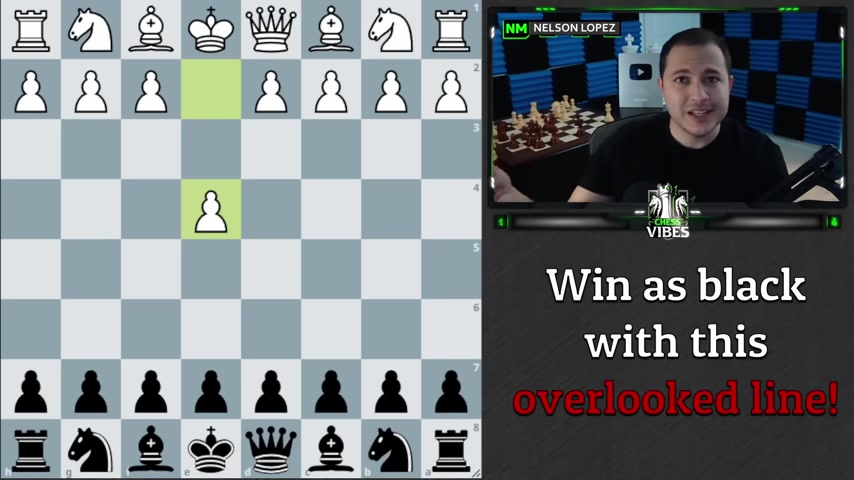
What's up guys today ?
I'm gonna be teaching you an overlooked line that you can play against E four as Black .
Now growing up , I would go to tournaments and I was , I would always be excited when I would get paired as white because I knew that I was gonna most likely get into a decent position out of the opening and have good chances to win the game .
But when I would play as black , I would feel like it was always an uphill battle .
Like I would just get into these bad positions out of the opening .
I'd be fighting to not get checkmated in the 1st 10 or 15 moves .
If I was lucky , I would make it , you know , through to the middle game .
And maybe by the end of the game , I would get into an equal position and try to play for a win .
I just really didn't feel comfortable , comfortable for a long time playing as black .
And I've read some comments , some of you guys have said the same thing that you struggle playing as black .
And so I think this is going to give you a nice option to play against E four .
So the line that I'm gonna be showing you guys is out of the Sicilian defense .
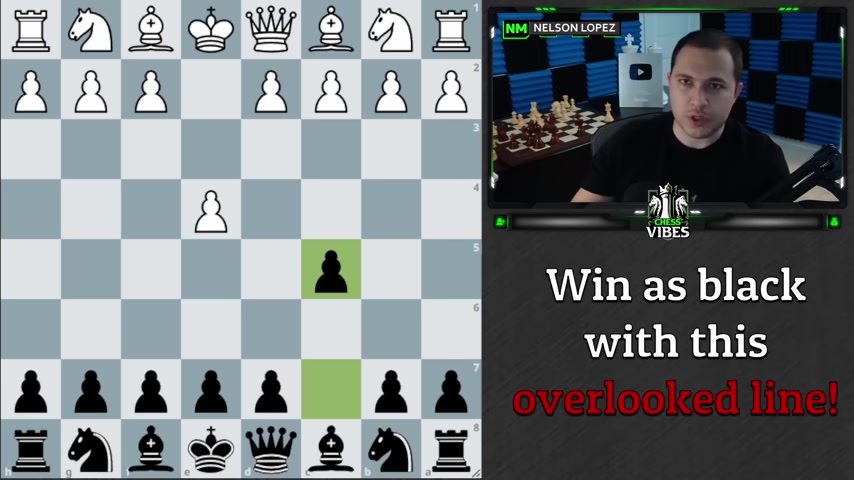
Now , you probably think of the Sicilian as being a super advanced uh highly theoretical opening where you have to know lots and lots of theory , you have to have studied it for years and years .
But what you're gonna find out is that there is this particular line that I'm gonna show you that that's not the case .
All right .
And so we're gonna be focusing on the main line .
So nine to F three , I'm not gonna be covering the sidelines here .
The other sidelines that white has are focusing on the main line nine of three .
And the move that I'm gonna be teaching you guys today is a six .
This is called the O Kelly variation .
And surprisingly , it's hardly played at all .
It's played about 2% of the time from this position as black .
Vast majority of people here are playing night C six and D six and then pretty many also play E six .
And then sometimes you see G six but A six is very rarely played .
And when you first see this move , it's kind of like , well , shouldn't we be developing our pieces or fighting for control of the center or getting ready to castle our king ?
Like , what are we doing ?
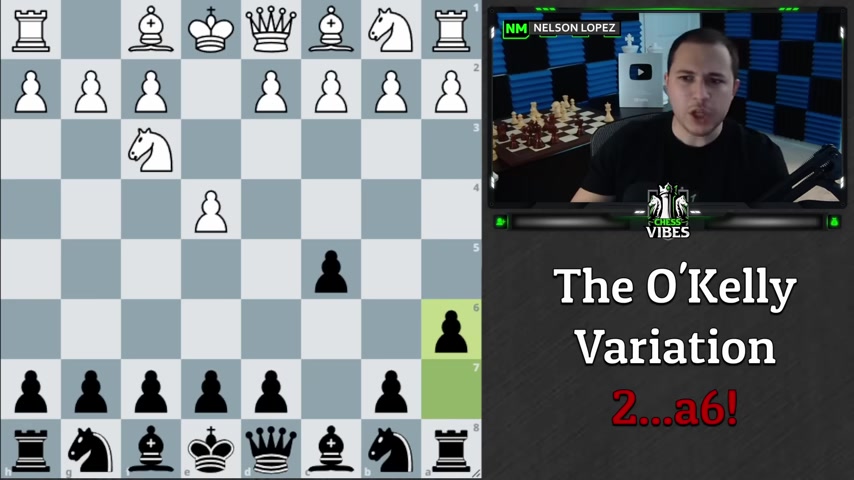
Pushing this random pawn over here on a six ?
Well , it has to do primarily with the fact that in a lot of the variations in the Sicilian defense , the B five square is a very crucial square .
And you know , sometimes you end up playing a six later anyway .
But if you don't , let's just say , for example , uh we play some other moves , this is always a possibility that you have to think about , right ?
Like maybe , you know , this night comes in over here or this night comes here or the bishop puts you in check .
And if you ever play E five to kind of strike at the center , you still have to think about this and this pawn can become weak and you can get attacked by a knight .
And um it's just something that you kind of always have to think about .
And so it's not actually as bad of a move as it might look , it's a very um useful move for us because immediately we put a stop to any ideas that white might have .
And here's the really interesting thing in almost all Sicilian variations for black .
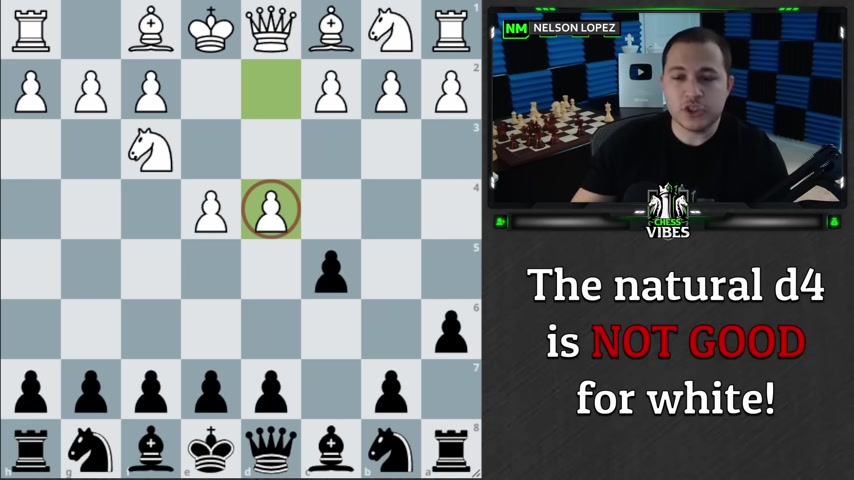
Anything that we might play and almost all of them , a good move for white is to play D four .
It's just , it's just what you do if you're playing against Sicilian , you play , you know , you play E four , you play 93 , you play D four very , very natural and common move .
And actually , it's the most common move played here with over half of the games , you know , reaching this position people playing D four .
And it turns out this is actually not a good move , it's just not a good move for White .
Um And it has to do with a particular line which I'm gonna show you in just a second .
Now , of course , White doesn't have to play D four .
There are some other options that they do have here .
And by the way , I should mention , this is a new course that I just released on my course page .
So if you want to check that out , I talk about all the other options uh as well in there that white can play .
But for this video , I'm kind of giving you away part of that course for free , I'm gonna , you know , cover completely what you need to do and what you need to know against D four .
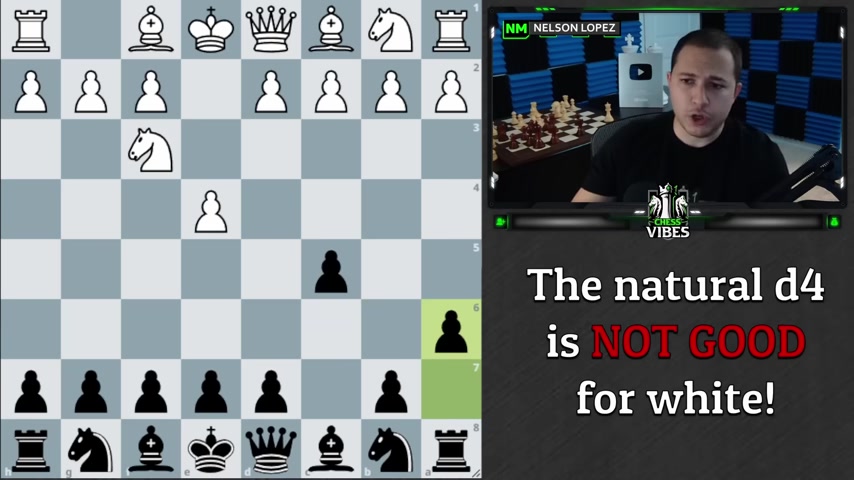
But I'm just mentioning if you do want at the end of the video , if you feel like you've learned and you want to start playing the system and you want to get the rest of the lines , check out the course , the link will be in the description below .
Like I said , it's a brand new course , um just released it the other day .
But for right now , let's go ahead and continue with D four , which most people are going to play D four , especially if they haven't seen this before .
Uh And they don't understand the idea .
They're just gonna go for the natural you know , D four .
So we're gonna take it and they could take with the queen .
Most people aren't gonna do that because then we just attack it with our knight and they lose a tempo .
Doesn't really make a lot of sense .
Most people are gonna take with the knight and now we're gonna play 92 F six attacking the pawn .
And this is a very standard Sicilian idea .
So this is not gonna be surprising to , to white just yet .
And most people are going to defend it with the knight .
This is really a logical move , develops a piece , defends the pawn and most Sicilian players are going to be familiar with , with this idea , right ?
And now is where we surprise them .
OK ?
Now is where we surprise them .
We play the move E five .
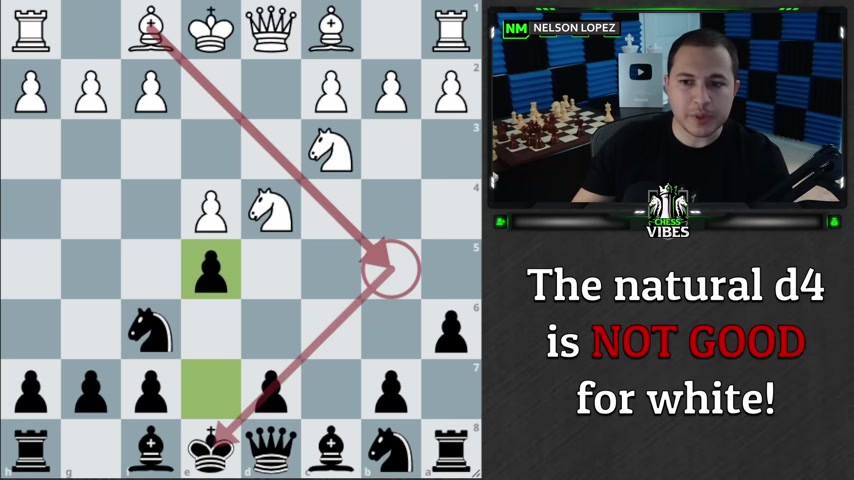
And normally when you're playing the Sicilian and you play E five , you have to think about what happens if the night hops over to B five , you also have to think in the lines where you've played D six , right ?
You have to think about what happens when the bishop comes out and puts you in check .
OK .
Uh So just going back to the beginning for a second to show you what I'm talking about in the main line , Sicilian with the night or you would start with D six and then after D four takes night F six , night C three , if you were to play the move E five right here .
There's a , there's a very real possibility that that white's gonna play something like this bishop to B five check .
And if you just play this sort of natural bishop D seven , they're gonna take you .
And however you take doesn't really matter .
They're gonna hop over to F five and already white has a nice advantage .
OK ?
You have a weak pawn here .
You can't really defend that too , too well , you have a , a hole here .
You also have to watch out for night B five and it's just not good for black , right ?
If we compare that and we go back to the line that I was just showing you after a six , right ?
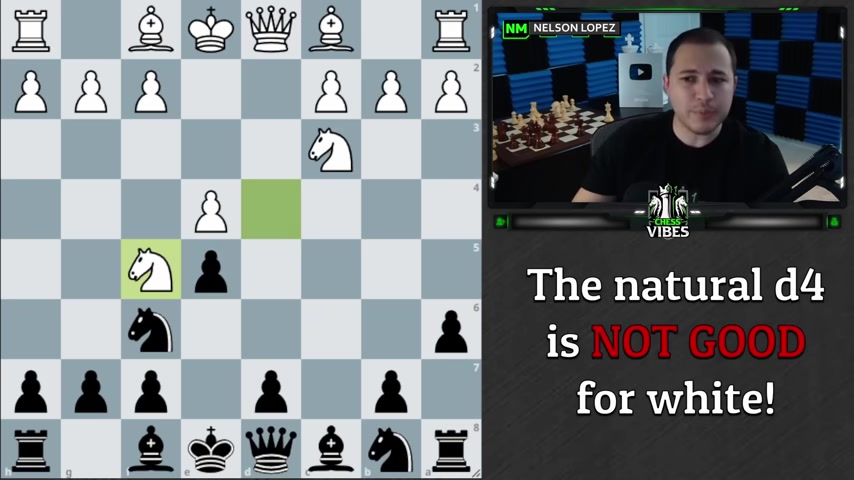
D four takes , takes night of six night C three E five .
There is no more bishop to B five check .
There's no more nine B five there .
You don't even have to think about that because we've already solved that problem by playing a six .
OK ?
And at this point , the best thing for , for white to do is to just say , OK , you know what the opening didn't work out for me .
I'm just gonna retreat and say , you know what , OK , fine .
It's an equal position .
Black surprise me and the game goes on .
But if they don't want to do that , which most people who are playing , you know , the Sicilian as White , they're trying to get advantage .
They don't want to just settle for some equal position , they're gonna try probably to go forward and attack you and if they do this and now you can play the move D five .
OK .
We have both of our pawns in the center now .
And white actually has a big problem with this night over here .
For example , if they take us , guess what ?
They just lost their night , can't do that .
If they take here with the night , we can just take it .
And again , they can't ever take with the pawn or they're losing their night over here .
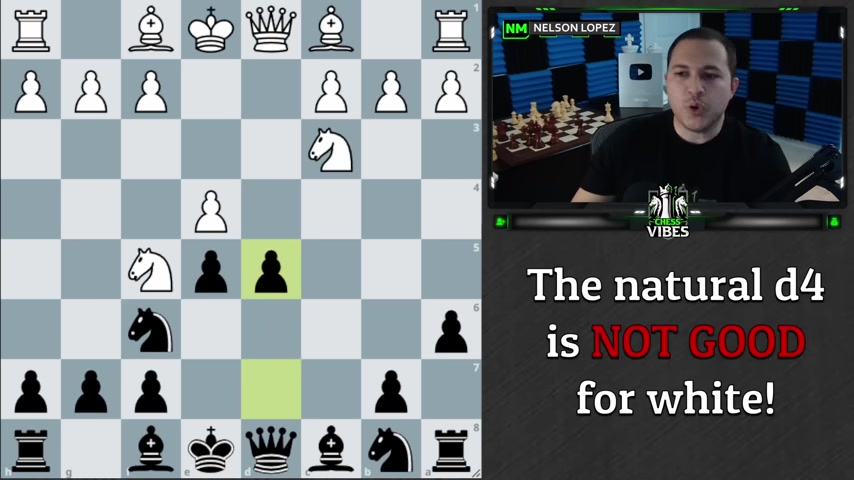
And so if they take with the queen , well , then we just trade the queens and again , we win a piece in all of those variations , right ?
So that's kind of the big problem that white has .
All right .
So they can't really take our pawn .
Um Probably the best thing that they could do would be to play bishop to G five .
But even here , we can play the move D four gaining space with tempo .
And again , it's a very awkward position for white .
Most people in this position make the mistake and play nine to D five trying to be aggressive and take advantage of this pin .
And if you'd like to pause and think through what's the move that we can play here as black , we just have a winning move .
Well , if you had a chance to look at that , the move that we play is simply bishop takes F five .
And we're actually just winning a piece because if white takes us back , well , then their night is um undefended and we can just take it right .
So we win a piece that way .
And if they try to , let's just say , trade off the night first with a check , we take back with the pawn .
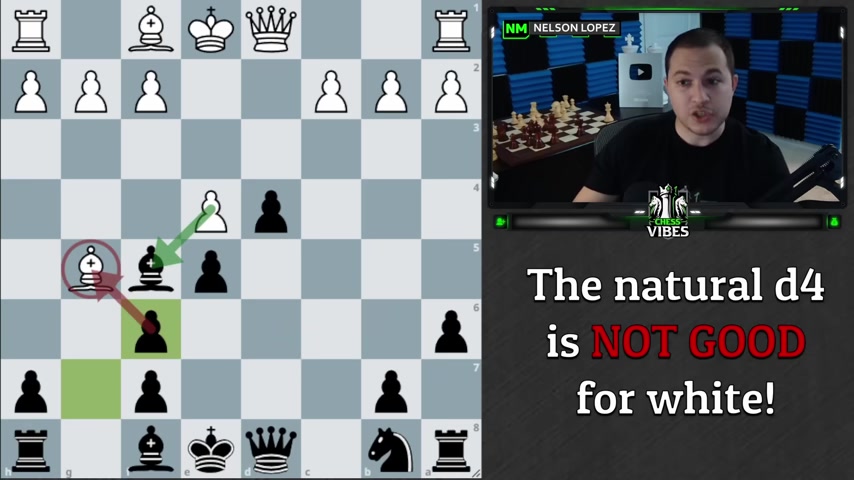
And again , we have an attack on the bishop so that they do take our bishop , we take their bishop and again , we come out with two pieces and white only has one .
We win , we win a minor piece , right ?
And there's no way around that for white .
They just lose a piece if they play 9 to 5 .
So that's a very common .
I won't say it's a little trap .
It's just kind of a tactical error that white can make .
Uh but you just win a piece if they play that .
And so what they need to do is um either retreat the night or take here on F six if they take here , uh we can simply take back and the night's gonna go somewhere again , it can't go here or it loses a piece to the same idea , right ?
So it has to kind of retreat , let's just say night to E two .
And this is a pretty comfortable position for us .
Um White has kind of gone backwards .
We have a very annoying pawn chain here in the center .
We have more space and this is just very pleasant to play for black going back .
Um The other thing that's that people will play sometimes in this position is Knight to G three instead of bishop to G five .
But on night to G three again , we play D four .
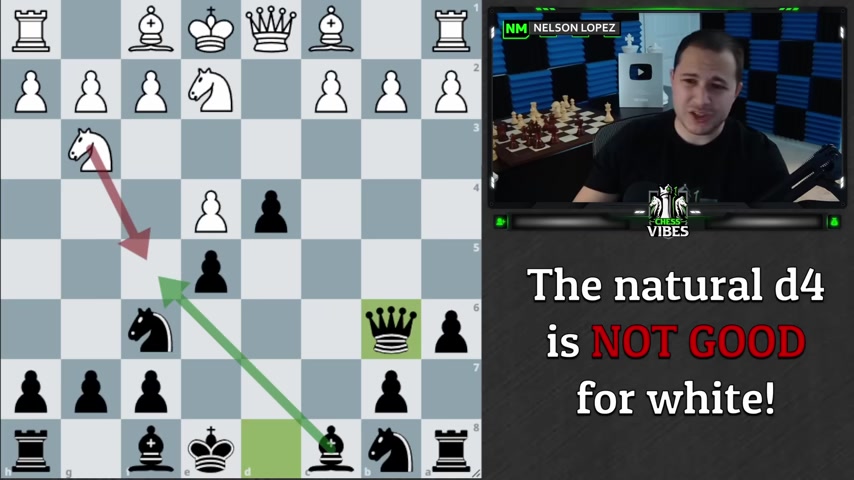
It kick the night away and once they retreat , we have this really nice move uh queen to B six .
And the interesting thing about this position is look at white's pieces for a second .
This bishop is stuck .
It would like to come out .
But the knights blocking it that night doesn't really have anywhere that it can move to unless it wants to go back to G one which doesn't make a lot of sense .
The bishop can't go this way to be to be Keto because this night is blocking , right , which also doesn't really have a lot of good squares .
You can't go there , you could go here , but then you're gonna get captured .
I don't know how good that is .
This bishop is the only other piece that white needs to develop .
Um But you then you lose this pawn .
And so it's kind of like white's already in it .
You know , we're on move eight and it's like , I don't even know what white can play here right there .
There's not a lot of options for white .
Uh We have ideas of H five H four trapping this night over here or just simply developing our pieces to good squares .
We have all sorts of options .
This is the dream , right ?
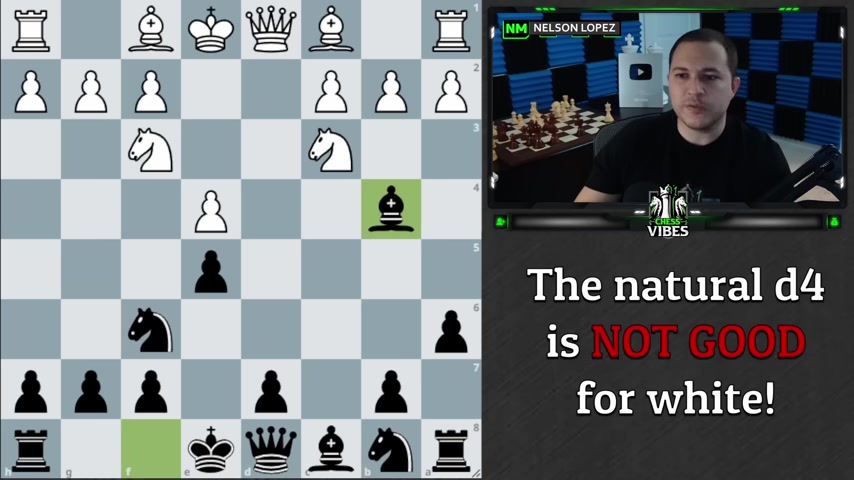
This is the dream position to play for black and it was very simple and , and white didn't really do anything like blatantly obviously wrong .
If we go back and look at these , these moves very , very obvious .
Most natural move for white was D four right here .
Super obvious move .
You got to defend your pawn , why not do it and , and develop a piece and then natural kind of like try to be aggressive , try to find a place for my night to go .
You can't go anywhere else , right ?
And it's just not a good move , right ?
Like I said , they , they should really go back .
Uh Even if they go back to F three , bishop to B four is kind of the other idea that we have in this position , we have quick development and already we're putting some serious pressure on the center and White has to figure out a way to deal with that .
After uh bishop D three , we can play D five again .
I mean , look at this , this looks great .
We're ready to castle .
We , we're threatening to play D four and win a piece .
We're threatening to take here and fork these pieces .
Um White has to figure out how to deal with that .
We've got very natural developing moves to follow up .
We have all sorts of options with our queen , right ?
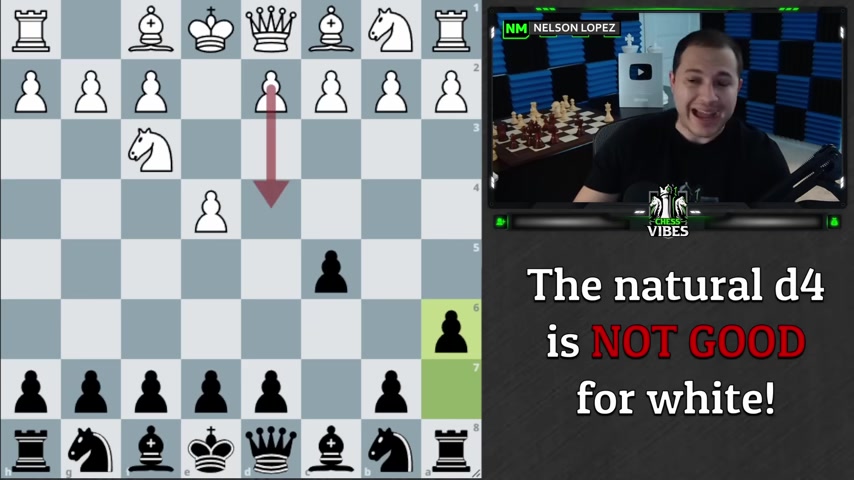
And it's really that simple .
OK .
So I wanted to show you guys this line because when I was , you know , preparing and , and creating this course , I just couldn't believe that it's not played more often .
I mean , this is a really solid option for Black , in my opinion .
And um yeah , I hope you guys enjoyed this video .
I hope you learn from it now , like I said , of course , White doesn't have to play D four .
They could play some other things which I do cover in the course .
Um So if you're interested in , in learning a little bit more , you know , check that out , but you can actually just take what I gave you right now , start playing this as black and in a lot of your games , people are going to be playing D four and you can go right into right into that line .
One other thing I want to show you real quick , I just put together this little PDF .
It goes along with the course .
Um And it's just kind of like a summary of what you learn in the course .
And it's , it's kind of just to jog your memory .
It's , it's , you know , kind of gives you what's the main idea of the O Kelly ?
What , what are we doing here ?
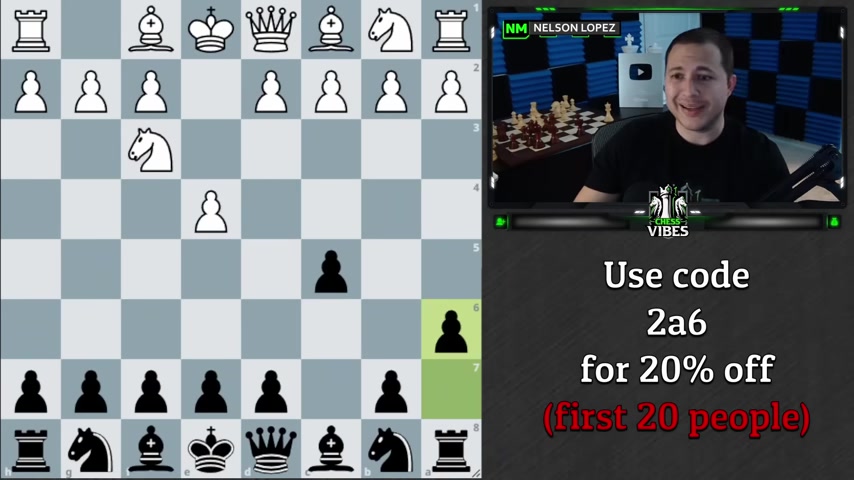
Some diagrams and you know , we talk about how it's most common response is bad for White and I'm not gonna give away everything but uh very , very short little PDF S like 16 to 18 pages , I think or just some , you know , little stuff like this just to kind of give you an idea .
Um But yeah , that's included in the course as well and I think you're gonna have a lot of fun .
I think you're gonna be excited to play against E four .
And um yeah , let me know what you guys think , what your experience is with this move .
And um for those of you who are interested , I'll see you inside the course .
Like I said , link is in the description below but having said that stay sharp , please mark , take care .
Are you looking for a way to reach a wider audience and get more views on your videos?
Our innovative video to text transcribing service can help you do just that.
We provide accurate transcriptions of your videos along with visual content that will help you attract new viewers and keep them engaged. Plus, our data analytics and ad campaign tools can help you monetize your content and maximize your revenue.
Let's partner up and take your video content to the next level!
Contact us today to learn more.